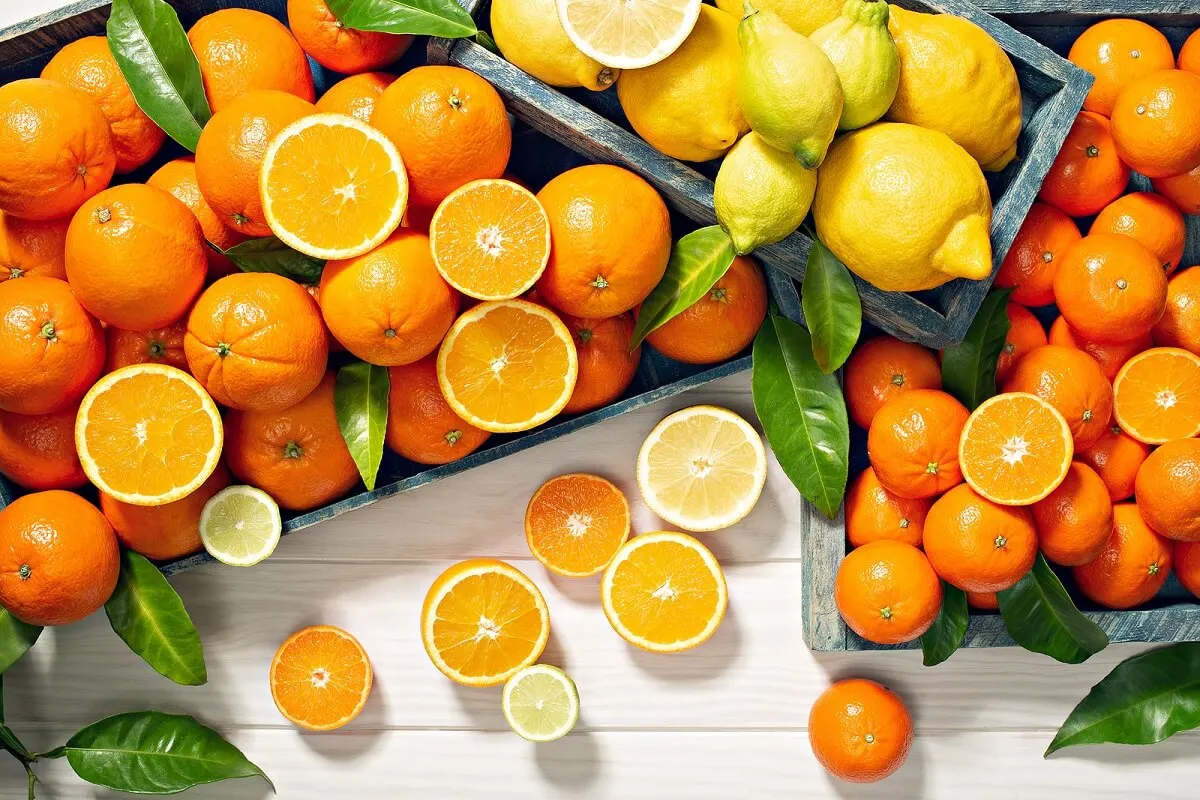Acidic and Semi-acidic Fruits: What Are They and What Are Their Effects?


Written and verified by the nutritionist Maria Patricia Pinero Corredor
Heartburn is a type of discomfort that afflicts a large part of the population. Unfortunately, it’s capable of passing from an eventual symptom to a chronic disorder. Although this doesn’t always happen, it can appear after eating certain foods, such as acidic and semi-acidic fruits.
Some of these fruits belong to the citrus group, such is the case of oranges and tangerines. However, there are others that, without being citrus fruits, are also very acidic, such as strawberries and pineapple.
Acid and semi-acid fruits also provide vitamin C, vitamin A, potassium, and fiber. Their restriction from gastric-protective diets depends on your tolerance to the fruit.
What is heartburn?
The U. S. National Library of Medicine defines heartburn as a painful burning sensation in the chest or throat. It occurs when stomach acid backs up into the esophagus, the tube that carries food and liquids.
Normally, acids in the stomach break down food and help digest it, while a valve blocks it from moving up into the esophagus. However, Dr. Angela Bosh points out that heartburn is a consequence of excessive production of this acid in the stomach. This is made worse by certain foods.
In addition, some disorders can lead to heartburn. When the valve does not work properly, such as the case of a hiatal hernia, the muscle weakens and gastric acid rises.
If acid rises into the mouth and down into the airways, it can cause gastroesophageal reflux. Gastritis or inflammation of the stomach lining also causes burning and pain.
Like this article? You may also like to read: Remedies That May Improve The Symptoms of Heartburn and Gastritis
What are acidic and semi-acidic fruits?
The acidity of a type of food is measured by the potential of the hydrogen element within the food matrix and is designated by the acronym pH. The scale ranges from 0 to 14, with pH being acidic below 7 and alkaline when it’s above that value.
According to the Revista Mexicana de Pediatría, acidic fruits and their juices are considered to be among the most acidic foods, since their pH value is below 4.5. The pH of the stomach suitable for digestion ranges between 3.5 and 4.
Acidic fruits and citrus fruits are those that define their taste and smell by the presence of organic acids, such as citric, malic, quinic, and lactic acid, which provide a sweet and sour taste. In particular, citrus fruits are a group belonging to the genus Citrus, which are characterized by a skin full of essential oils and a pulp in the form of juicy segments.
Semi-acid fruits are those with a pH between 4.6 and 7. The concentration of citric acid is lower in them.

Acidic fruits
In this group, we find the following examples:
- Citrus fruits: Lemon, lime, orange, grapefruit, tangerine, lemons, lime, and grapefruit
- Red fruits: Raspberry, blackberry, strawberry, and currant
- Others: Pineapple, grape, tamarind, tomato, pomegranate, and plum
Semi-acidic fruits
Semi-acid fruits are better tolerated by people suffering from gastritis, reflux, or other stomach problems. Those that are part of this group are the following:
- Green apple
- Carambola
- Raisin
- Guava
- Persimmon
The effects of acidic and semi-acidic fruits on the stomach
Below, we’ll take a look at the main effects that the consumption of acidic fruits has on conditions affecting the upper digestive tract.
Acidic fruits can increase pain
Acidic fruits can accentuate pain when consumed during acute gastritis – that is, when the stomach is inflamed. They can also worsen reflux, as they cause more pain in the wounds that form on the walls of the esophagus.
Once the gastritis or reflux is relieved and the lesions heal, acid fruits can be consumed without any problem in your diet.
In this sense, specialists have reported that citrus fruits, when used alone or together with antibiotics, help to eradicate H. pylori bacteria. Therefore, it’s suggested to seek advice from a specialist or a nutritionist to assess their inclusion in your diet.
They accelerate the burning sensation
A characteristic of gastritis, in addition to inflammation and pain, is the acidity itself or the burning and burning sensation. When acidic fruits are ingested, more acid is added, and the condition worsens.
They can complicate swallowing
Acidic fruits can produce excessive acidity that goes up to the larynx and irritates the entire area in its path, including the esophagus. It’s possible for this condition to evolve into difficulty swallowing and nausea.
In these cases, eating problems and weight loss occur in the medium term. If heartburn and difficulty in swallowing persist for more than two days, a health professional should be consulted.

Fruits you can eat when you have heartburn
In gastric protection diets, the goal is to avoid foods that increase excessive secretion of hydrochloric acid in the stomach. The diet will relieve your symptoms, but it’s not curative.
A special diet is indicated for gastritis, peptic ulcers, hiatal hernia, and dyspepsia in general. It’s advisable to consume non-acidic fruits, preferably cooked or in compotes or canned, especially in the acute stage of any gastric condition.
Within this group, the most recommended are the following:
- Pear
- Cambur.
- Peach
- Loquat
- Soursop
- Red or yellow apple
Once the acute symptoms of acidity have been overcome, some acidic and semi-acidic fruits can be included. It all depends on the gastric tolerance of the person.
We think you may be interested in reading this, too: Do You Have Heartburn or Acidity? They’re Not the Same!
What to eat when you have heartburn
With a heartburn disorder, acidic or semi-acidic fruits should be avoided. Instead, you should eat fruit purees or compotes for gastric protection, distributed in six smaller meals.
In addition, you should avoid chemical irritants, such as spicy foods, highly seasoned foods, salty foods, foods at extreme temperatures, whole grains and types of flour.
Don’t forget to eat slowly and chew your food well. Eating in a quiet, stress-free environment helps to control symptoms and avoid exacerbating the condition.
All cited sources were thoroughly reviewed by our team to ensure their quality, reliability, currency, and validity. The bibliography of this article was considered reliable and of academic or scientific accuracy.
- Pablo Casaubon-Garcín, Priscilla Lamshing-Salinas, Fernando Isoard-Acosta, Sofía Casaubon Lemen-Meyer, Dagoberto Delgado-Franco,Ana Bertha Pérez-Lizaur. pH de los alimentos: ¿una herramienta para el manejo de los pacientes con reflujo gastroesofágico? Revista Mexicana de PEDIATRÍA. Vol. 85, No. 3 Mayo-Junio 2018 pp 89-94. Disponible en: https://www.medigraphic.com/pdfs/pediat/sp-2018/sp183c.pdf
- Angela Bosch. Acidez y antiácidos. Offarm. 2004, Vol. 23. Núm. 9. páginas 64-70. Disponible en: https://www.elsevier.es/es-revista-offarm-4-articulo-acidez-antiacidos-13067347
- Giuseppina Mandalari, Carlo Bisignano , Santa Cirmi , y Michele Navarra. Effectiveness of Citrus Fruits on Helicobacter pylori. Evidence-Based Complementary and Alternative Medicine / 2017. Article ID 8379262 | https://doi.org/10.1155/2017/8379262
- MedlinePlus. Biblioteca Nacional de Medicina. Acidez estomacal. Disponible en: https://medlineplus.gov/spanish/heartburn.html
This text is provided for informational purposes only and does not replace consultation with a professional. If in doubt, consult your specialist.








